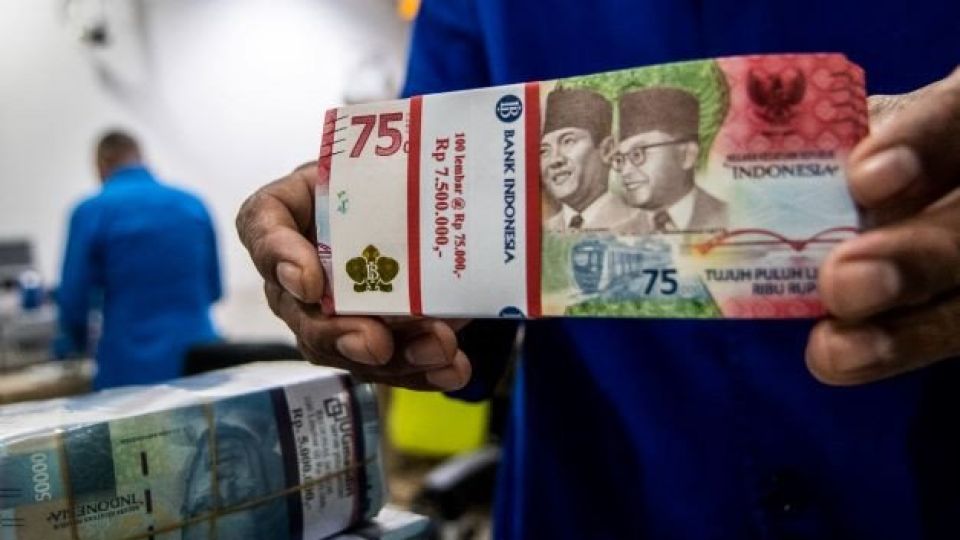December 5, 2023
JAKARTA – Growth of third-party funds in the banking sector has slowed further, continuing a trend that began early this year.
The country’s lenders booked in October a year-on-year (yoy) increase of only 3.43 percent in customer savings, current account balances and time deposits, down from 6.54 percent in the preceding month.
The Financial Services Authority (OJK) and Bank Indonesia (BI) maintain that liquidity in the banking sector remains abundant, but analysts warn the issue could result in slower loan growth next year due to a “liquidity battle” between banks and nonbanks, including the government.
BI data shows that third-party funds in current accounts grew only 1.8 percent yoy in October, a marked slowdown from the 11 percent annual rate recorded in September.
Meanwhile, money in savings accounts and time deposits increased 2.6 percent yoy and 6.9 percent yoy, respectively.
The central bank has undertaken efforts to shore up liquidity.
“Adequate liquidity in banks is also supported by the implementation of the Macroprudential Liquidity Policy Incentives (KLM) effective from Oct. 1, 2023, providing additional liquidity to the tune of Rp 138 trillion [US$8.9 billion] as of November 2023,” BI Governor Perry Warjiyo told a press briefing on Nov. 23.
The OJK meanwhile stated that metrics on banking liquidity, in particular the ratio of liquid assets to third-party funds (AL/DPK) and the ratio of liquid assets to noncore deposits (AL/NCD), were at 26.36 percent and 117.29 percent, respectively, higher than their respective safe threshold levels of 10 percent and 50 percent.
Liquidity battle’
Bhima Yudhistira, executive director of the Center of Economic and Law Studies (CELIOS), attributed the slower growth in third-party funds to “crowding out” between banks and the government. This effect was caused by the massive issuance of government bonds with attractive interest rates of more than 6.7 percent, which had induced a liquidity battle in the market, he opined.
“Banks became too lazy to disburse loans and just played safe by parking their money in government bonds. Meanwhile, their customers also saw government bonds as a low-risk investment instrument with higher interest rates than banks’ time deposits.
“It is a liquidity chaos that was created by the government,” Bhima told The Jakarta Post on Monday.
With government bonds making up 88 percent of total state debt and the burden of paying off maturing debts continuing to increase, Bhima explained that the liquidity tug-of-war between banks and the government would only intensify next year.
“If the trend continues, loan growth from banks will be hampered, and that is very dangerous for the recovery of the [country’s] real sector,” he cautioned.
Jasmin, distribution and funding director at state-owned lender Bank Tabungan Negara (BTN), said separately that competition from other investment instruments had indirectly sucked up customers’ savings, leading to slower third-party funds growth in the banking sector.
“For example, the massive issuance of investment instruments from the government and BI, such as SBN [government securities], SRBI [BI rupiah securities] and SVBI [BI foreign exchange securities],” he said on Nov. 28, as quoted by Kontan.
Aviliani, a senior economist at the Institute for Development of Economics and Finance (INDEF), attributed the slower growth of third-party funds to the increasing number of people opting to invest their savings.
“People can purchase government bonds and mutual funds [for] as low as Rp 100,000. Thus, we should not only look at the growth [rate] for third-party funds, but also at how many people have switched from [putting their] savings in banks to investment instruments,” she said on Wednesday, as quoted by CNBC Indonesia.
M. Amin Nurdin, a senior faculty member at the Indonesian Banking Development Institute (LPPI), agreed with the notion that slower growth in third-party funds might be caused by a surging confidence among individuals in investing their money in other instruments or build a business. However, he opined that the sluggish pace was a seasonal trend.
Josua Pardede, chief economist of publicly listed lender Bank Permata, pointed to foreign central banks’ more aggressive hike in interest rates compared to BI had pushed some investors to put their money in other countries, leading to capital outflow. To stem this, BI had responded by issuing several instruments like SRBI, SVBI, its foreign exchange sukuk (SUVBI) and time deposits for natural resource export proceeds (DHE SDA).
“Overall, that situation has reduced the placement of third-party funds in the banking sector,” Josua told the Post on Thursday.
He nevertheless rejected the idea that the movement of money from banks’ time deposits to government bonds would disrupt liquidity in the banking sector, which only accounted for 20 percent of the liquidity pool in Indonesia’s financial system.
Even so, Josua still urged the government to follow up on its fundraising efforts through issuing bonds by increasing state spending, so money could be returned to the real sector and reenter the banking sector.
“At present, the [massive] issuance of government bonds is not being followed by high state spending, which was still low in October. That is also shown by the placement of government funds in the central bank account, which remains relatively high,” he said.


